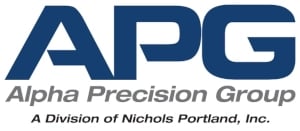
3 Metal Additive Manufacturing Applications and the Industries They Serve
Many big industries are now using metal additive manufacturing (MAM) technology to achieve more complex, lightweight products. And they’re succeeding in an expanding variety of applications.
This article covers the most common applications of additive manufacturing, along with the industries most benefiting from its success:
3 Common Applications of Additive Manufacturing
The number of metal additive manufacturing uses continues to increase as the technology and materials continue to break new ground.
Some popular and cost-effective applications for metal additive manufacturing include:
- Creating complex components
- Prototyping
- Mass production
1. Creating Complex Components
The metal additive manufacturing process has the unique ability to produce extremely complex components that maintain their strength and usability.
With other manufacturing technologies, a complex design can result in:
- A long wait time
- High production cost
- The need for expensive custom tooling creation
However, one of the advantages of metal AM is that it eliminates these issues and instead creates a complex part at no extra cost. Since 3d printing happens in layers, it enables the production of complex components that use less material – such as assemblies with moving elements. This process not only reduces material usage but also minimizes waste.
2. Prototyping
Additive manufacturing is one of the fastest paths to metal part prototyping. It’s what’s made metal AM popular ever since it first came into conception.
The ability to rapidly produce prototypes gives more time to consider and execute design changes based on the outcome of the previous attempt. Compared with other manufacturing processes, it doesn’t take as much time to produce these functional prototypes – they’re often completed in days rather than weeks or months. Not only could this speedy production allow for faster testing and alterations, but it can reduce overall costs in some cases.
Once you’re satisfied with how your component turns out, you can quickly pivot to mass production.
3. Mass Production
When 3D metal printing first became available, it was nowhere near ready to handle mass production. Fast-forward to today, and metal additive manufacturing has become a highly efficient way of mass-producing geometrically complex components.
Mass-produced additive manufacturing is now a factor in many everyday items, such as surgical instruments, electronic components, and custom jewelry.
Want to learn more about MAM? Download our Metal Additive Manufacturing Checklist.
5 Industries Using These Metal Additive Manufacturing Applications
The list of industrial applications of additive manufacturing only continues to grow across the globe.
Some of the biggest industries that metal additive manufacturing services include:
- Automotive
- Aerospace
- Construction
- Medical
- Energy
Automotive
The automotive industry is the leader in metal additive manufacturing use. Metal 3D printing in the automotive industry is valued at over $6 billion in 2025, and is expected to exceed $11 billion in 2030, according to research by Towards Automotive.
Additive manufacturing applications in the automotive industry include:
- Prototyping
- Customized tooling
- Inventory reduction through “as-needed” production
With additive manufacturing’s ability to simplify the supply chain, along with producing strong parts with reduced weight, the automotive industry has increased its profit margin.
2. Aerospace
Additive manufacturing in the aerospace industry is driving innovation and is constantly evolving to replace existing processes. Not only does AM allow aircraft makers to have more design freedom, but it also reduces component weight and costs.
Additive-manufactured parts can be found in the aerospace industry far and wide, from the doors of an airplane to the seats, and even the table tray mechanisms.
3. Construction
Additive manufacturing in the construction industry has gained a lot of popularity in recent years. This is the result of how complex certain construction devices need to be to function properly.
With traditional manufacturing processes, this can get expensive when buying in bulk, especially with the amount of waste produced through CNC machining compared to AM.
But the ability to produce complex shapes isn’t the only reason metal additive manufacturing has become a construction industry staple. In fact, the construction industry most benefits from AM in these three areas:
- Automation of production
- Design freedom
- Potential for optimization
4. Medical
MAM has helped revolutionize the medical industry through customization and rapid prototyping. From the tools healthcare professionals use to the implants used to improve quality of life for countless patients, several applications continue to benefit the industry. Here are just a few examples of ways additive manufacturing serves the medical field today:
- Creation of surgical tools (scalpels, clamps, etc.)
- Creation of medical devices like stents and pacemakers
- Production of implants and prosthetics customized to a patient’s exact size and fit (dental crowns, knee replacements, etc.)
- Production of anatomical models to practice performing complex surgeries
5. Energy
Metal additive manufacturing also allows the energy sector to innovate and thrive. For example, it’s often used to manufacture drilling tools for the oil industry, turbine blades to produce wind energy, components built to withstand extreme temperatures required in tools utilizing heat energy, and more.
Closing Thoughts
Metal additive manufacturing is quickly becoming a go-to technology for many industries, especially as its list of capabilities continues to grow.
When you factor in the seemingly endless list of materials -- metal or otherwise -- available in additive manufacturing, the design flexibility is immense.
To learn more about additive manufacturing, or AM considerations specific to designing with metal, ask a question here.
